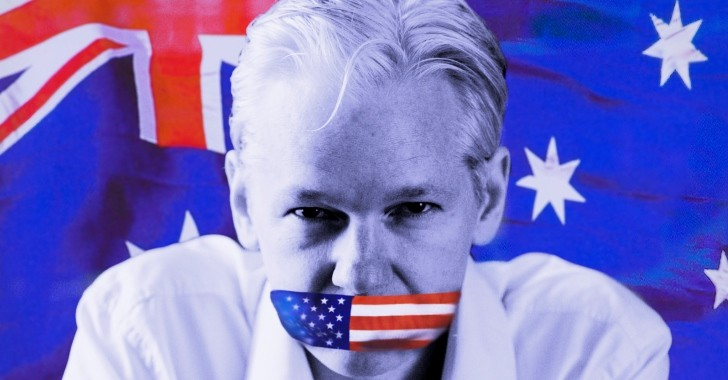
(Credit: AP)
Many dread the approaching winter — the darkness, frigid weather and lower energy levels that blow in along with cold fronts and snowstorms.
As headlines warn of “bomb cyclones” and cold snaps, most will begrudgingly grit out the winter months, grinding through dreary doldrums of January and February and counting down the days until spring. Some even succumb to seasonal affective disorder, a form of depression that tends to occur at higher rates in colder regions and is hypothesized to be related to the lack of daylight in those regions.
But what about people who live in the coldest parts of the world, where the winters are longest and the summers fleeting? Do they similarly dread the winter? Or could they offer clues about how to avoid the wintertime blues?
In August 2014 I moved to Tromsø, Norway, an island of 70,000 people located over 200 miles north of the Arctic Circle. Tromsø’s location is so extreme that they experience two months of “polar night” each year — when the sun does not rise above the horizon.
Yet despite the extreme winter conditions, studies have shown that residents of Tromsø do not experience as much seasonal depression and wintertime mental distress as you might expect.
To try to figure out why, I spent 10 months studying how people in Tromsø cope with — and even thrive during — the long, dark winters.
My research led me to a surprising conclusion: perhaps the psychological concept of mindset is the reason for their winter well-being.
After arriving in Tromsø, I was terrified at the thought of the impending winter. Months of friends and family telling me how they could “never move some place so cold and dark” because the winter makes them “so depressed” or “so tired” had me bracing for the worst-case scenario.
But it didn’t take long for me to realize that most residents of Tromsø weren’t viewing the upcoming winter with a sense of doom. In fact, to many locals, the original question I’d planned to ask — “Why aren’t people in Tromsø more depressed during the winter?” — didn’t make sense. Most people I spoke to in Tromsø were actually looking forward to the winter. They spoke enthusiastically about the ski season. They loved the opportunities for coziness provided by the winter months.
As I experienced firsthand Tromsø residents’ unique relationship to winter, a serendipitous conversation with Alia Crum, assistant professor of psychology at Stanford University, inspired me to consider mindset as a factor that might influence Tromsø residents’ sunny perspective of the sunless winter. Crum defines mindsets as the “lenses through which information is perceived, organized and interpreted.” Mindsets serve as an overarching framework for our everyday experiences — and they can profoundly influence how we react in a variety of situations.
Crum’s work has shown that mindsets significantly influence both our physical and mental health in areas as diverse as exercise, stress and diet. For example, according to Crum’s research, individuals can hold the mindset that stress is either debilitating (bad for your health and performance) or enhancing (motivating and performance-boosting). The truth is that stress is both; it can cause athletes to crumble under pressure and lead CEOs to have heart attacks, but it can also sharpen focus and critical thinking, giving athletes, CEOs and the rest of us the attention and adrenaline to succeed in high-pressure situations. According to Crum’s work, instead of the mere presence of stress, it is our mindset about stress — whether or not we perceive it as a help or a hindrance — that contributes most to health, performance and psychological outcomes.
After speaking with Professor Crum, I began to wonder: could it be that residents of Tromsø possess a positive wintertime mindset, which allows them to not only persevere but also thrive during the polar night?
Along with my advisor at the University of Tromsø, Joar Vittersø, I developed a preliminary “Wintertime Mindset Scale” to measure how residents of Tromsø view the winter. The Wintertime Mindset Scale asked our survey participants to agree or disagree with items such as “There are many things to enjoy about the winter,” and “I find the winter months dark and depressing.”
The results of our study in Norway found that having a positive wintertime mindset was associated with greater life satisfaction, willingness to pursue the challenges that lead to personal growth, and positive emotions.
This preliminary study has raised many new questions about the role mindset might play in seasonal wellness. Research indicates that 6% of the US population suffers from seasonal affective disorder, a form of major depression with a recurring seasonal pattern, which most often occurs during the winter months. Another 14% suffer from a lesser pattern of seasonal mood changes known as the “winter blues.”
These statistics are certainly troubling and raise questions about preventing and curing winter depression. But what about the other 80% of the US population? Even excluding residents of sunny regions like Florida and California, the vast majority of Americans who live through the winter every year don’t get seasonal depression.
Our pilot data suggest that the concept of wintertime mindset could add a positive component to the discussion of seasonal well-being, and that mindset may be an important addition to the theoretical and practical discussion of seasonal wellness. However, more research is needed to both refine the Wintertime Mindset Scale and further validate these initial findings.
Back on the US East Coast for the holidays, the chill in the air and the early nightfall already had some of my friends and family grumbling. But I was able to convince at least some of them to find what they love about winter and lean into it; looking at winter as an opportunity rather than a burden can help people enjoy all that the season has to offer.
I pointed out that Norwegians embrace the idea of koselig, or “coziness” — that making the conscious effort to light candles and fires, drink warm beverages and snuggle under blankets can be enjoyable and relaxing.
![]() And taking the time to bundle up and get outside even in the worst weather can help you feel like winter isn’t limiting your opportunities for recreation. Norwegians have a saying that “there’s no such thing as bad weather, only bad clothing,” which typifies their ingrained belief that being active is part of a happy life — and, especially, a happy winter.
And taking the time to bundle up and get outside even in the worst weather can help you feel like winter isn’t limiting your opportunities for recreation. Norwegians have a saying that “there’s no such thing as bad weather, only bad clothing,” which typifies their ingrained belief that being active is part of a happy life — and, especially, a happy winter.
Kari Leibowitz, Ph.D. candidate in Psychology, Stanford University
via IFTTT


 Bitcoin donations:1Ac7PCQXoQoLA9Sh8fhAgiU3PHA2EX5Zm2
Bitcoin donations:1Ac7PCQXoQoLA9Sh8fhAgiU3PHA2EX5Zm2